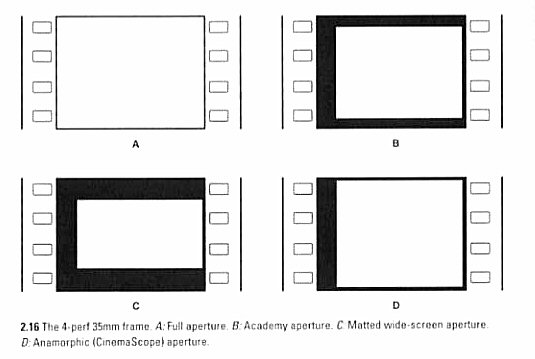So example A: this is how silent films were shot (and which later became revived in the 80s with the Super35mm format.)
Example B is the same aspect ratio more or less as the silent film frame (1.33), but shrank to allow the optical film track in between the left sprockets and the image. This is how films were shot and projected from 1929 until about the 50s.
Example C: the frame from example B is cropped on the top and bottom to allow cheap and easy widescreen (1.66 and 1.85). This method became popular starting in the 50s.
HOWEVER: note that films would not necessarily be cropped in camera. Many films were shot using the methods in example B but the cinematographer would make sure to frame his or her shot so it would be cropped properly when distributed in the move theater. This "soft matte" would often be opened up on home video to allow a 1.33 image on old square televisions.
This explains why there are widescreen and 'fullscreen' versions of your film.
Finally, example D is how some early sound films were shot. They merely cut off part of the image on the left to make room for the sound track and thus was born the short-lived 1.19 aspect ratio. They quickly moved to 1.33 by cutting off the top and bottom a bit (see example B), however, this was later revived in the 50s and 60s for cinemascope. Using a 2x anamorphic squeeze lens, you get... a 2.39 aspect ratio.



